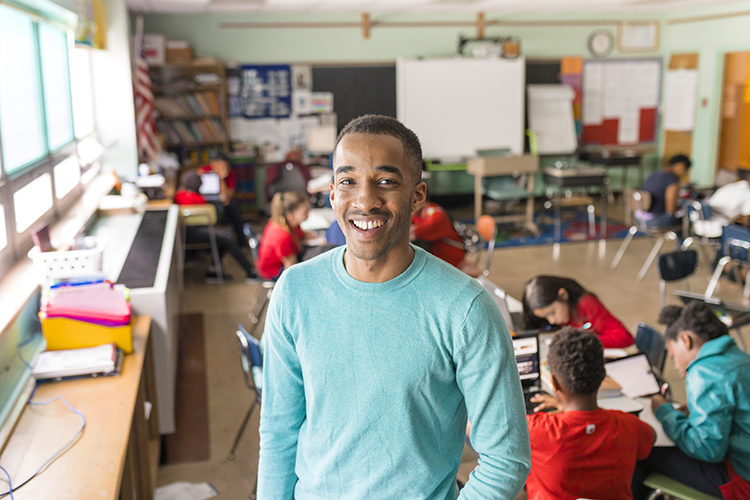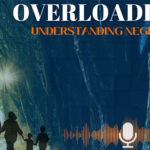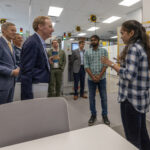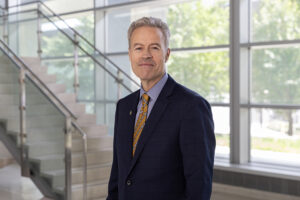During this coronavirus pandemic, “pivot” is a popular word to describe a sudden shift in direction. Student teachers, along with their students, families and cooperating teachers, had to pivot in the middle of spring semester when schools suddenly closed down and turned to virtual learning.
For Ashley Thielbar, a senior in education who is doing her student teaching at Lane Intermediate School in West Allis, it was a reminder that teachers have to be adaptable during challenging times.
“Teaching is on the fly sometimes,” said Thielbar. “You have to do what you’ve got to do for your learners and go with the flow. This is just another test of how good a teacher you are.”
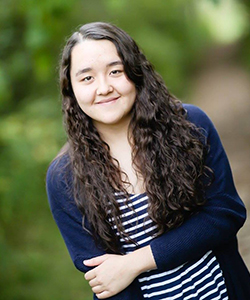
Working with the cooperating teachers who are mentoring them, student teachers have moved lessons to online platforms like Google Classroom, shared ideas with other teachers on Zoom, and chatted via text, phone, Google Hangout and email with their students.
Ebenezer (Ben) Keane Rudolph is student teaching eighth-grade science and sixth-grade social science at Golda Meir School in Milwaukee. In addition to helping teach and posting and grading assignments on Google Classroom, he and his cooperating teacher, Michelle Young, are making a point of staying in touch with families and students.
“We’ve been calling parents pretty consistently, just checking in, seeing what certain students are doing with this. We just want parents to let them know we’re here if they have any questions about school. We’re also trying to change that stigma of only calling when their child does something bad.”
For some, there have been additional challenges.
John Raven, who returned to UWM for a post-baccalaureate certification in teaching after 20 years in the business world, was student teaching and also substitute teaching at a Waukesha school. The principal asked him to take over as a long-term substitute for a fourth-grade teacher who was about to go out on leave for the year. Two days later, the school closed.
“I am teaching math/science/social studies to two homerooms,” Raven said. “The math unit the students moved into after about a week of virtual learning was geometry, and it has been very challenging to teach virtually – at least an 8 out of 10 in degree of difficulty.”
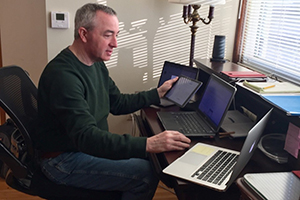
But, he added, he’s working closely with his cooperating teacher. Lindsey Johnston. “I am doing all I can to furnish the students with learning opportunities each school day. From virtual math lessons to recorded read-alouds from chapter books, video chats to brain breaks, we’ve tried many avenues already.”
Students have been generally responsive, and schools are working hard to make technology available to those who don’t have it, often sending home school Chromebooks or tablets already loaded with programs the students have used.
“For the most part, students have been responding,” said Jena Schneider, who is student teaching third grade, working with teacher Carol Muellenbach. Her school, Garland Elementary on the south side of Milwaukee, passed out Chromebooks for students who need them. “I hope that encourages and gives access for more students to participate in the virtual learning.”
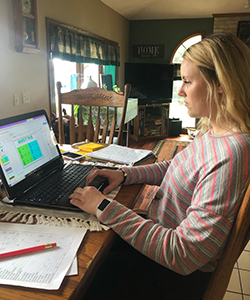
“When students get a lot of freedom, especially the eighth-graders, the last thing they want to do is work,” said Rudolph. But after the first few weeks, most of the students got into a rhythm. “They’re learning to manage their work and their time. I tell them they have to finish strong because they’re going to be in a different type of school next year.”
While learning new technology and working closely, though virtually, with their cooperating teachers, the student teachers know they’re missing some experiences.
“I miss being there in the classroom, seeing a hand raised and being able to quickly go to help them,” said Thielbar.
“It’s much easier to gauge how a student is doing by having that one-on-one conversation,” added Rudolph.
Most of all, according to the student teachers, they miss seeing the students they’ve been building relationships with – some of them have been at the same school doing field experiences or other work for more than just the first two months of the spring semester.
“I’d gotten to know them pretty well before everything shut down,” said Thielbar. “When (Gov. Tony) Evers announced schools would be closed for the rest of the semester, it was heartbreaking.”
